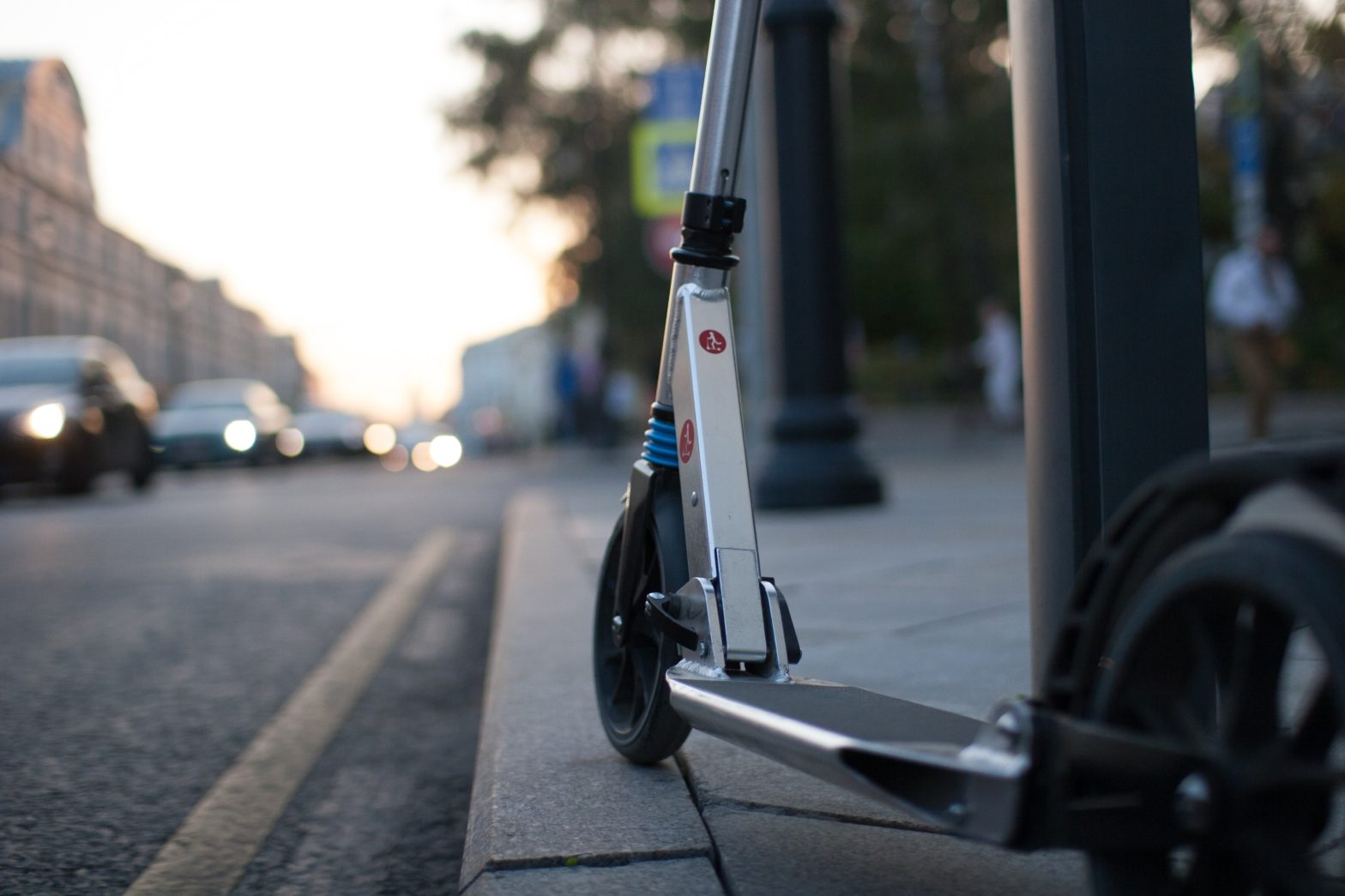
Photo: let-s-kick-unsplash
E-scooter fire safety becoming a growing concern
30 May 2022
by Christopher Carey
Reports of spontaneous e-scooter fires and explosions have recently gathered pace. Christopher Carey looks at what’s behind the issue and what more can be done to increase safety.
The benefits of a compact, fast and fully electric mode of transport are clear – less congestion, pollution and time wasted navigating city streets.
But as e-scooters continue to proliferate globally, there are growing calls to address a concerning safety issue that has emerged.
Reports of spontaneous fires and explosions have gathered pace, prompting a slew of warnings from city authorities and fire services.
The majority of issues have been related to privately owned e-scooters, with faulty lithium-ion batteries imported from China seen as the main culprits.
While in the grand scheme of things the number of incidents has been relatively small, the risks are very real.
In November, a London Tube service had to be evacuated after a privately-owned e-scooter brought onboard by a passenger burst into flames and sent smoke billowing through the carriages.
The incident was one of several that led TfL to ban e-scooters and e-unicycles from its services in December after a review by the transit operator found that “defective lithium-ion batteries which ruptured without warning” were to blame.
While privately owned e-scooters currently remain illegal to use in public spaces in the UK, they look set to be legalised later this year and are already widely available for purchase.
A lack of regulation outside of the government-mandated e-scooter trials also means private models are not required to meet any minimum vehicle standards, creating a potentially dangerous environment for riders.
Manufacturing defects
It’s not just e-scooters which pose a risk – any devices that use lithium-ion batteries are susceptible to fires, with e-bikes, e-buses and mopeds, as well as laptops and mobile phones also at risk of spontaneous combustion.
London’s Fire Brigade has revealed that firefighters were called to 74 e-scooter and e-bike blazes in the capital last year, up from 28 in 2020 – a jump of 164 percent.
“The problem lies with manufacturing defects,” said K.M. Abraham, Research Professor, Northeastern University Center for Renewable Energy Technologies.

“Every day we are using billions of these batteries [lithium-ion] in our devices, our cell phones, our laptops, etc., but they don’t explode because they are manufactured to very high specifications and precision.”
“[In the US] we have the UL 2272 safety standard, where the materials used in the battery have to be qualified before certification is awarded, but this is not mandatory.”
In 2016, Abraham, a world-renowned expert in lithium-ion technology, penned a technical commentary for the Electrochemical Society on why two-wheel hoverboards were exploding and the role the lithium-ion batteries played in their combustion.
In comparing hoverboard batteries to e-scooter batteries, Abraham suggested the danger to human life was very real.
“Ultimately it really depends on where these fires happen – there have been cases where I was brought in [to court] as an expert witness where people have died because it [the battery fire] happened inside the house.”
In August 2021, a nine-year-old boy died in New York after a fire caused by an e-scooter battery that was left charging through the night.
Speaking after the tragedy, then New York City Fire Commissioner Daniel Nigro said: “This loss of life could have been prevented – and we’ll work very hard moving forward to make this a safer city by working on how we can eliminate fires started by charging batteries.”
The former commissioner said e-scooter batteries were proving to be an extreme hazard throughout the city, and have been “known to overheat and explode”.
“People go to sleep, they take a long time to charge, so they’ll charge them overnight, and as in this instance, the boy wakes up and there’s no way out,” he added.
“Frequently, where do people charge these batteries? Right near the front door and what does that do? It blocks in their exit.”
Industry problem
While the majority of fires have occurred with privately owned models, some shared e-scooter firms have also had issues.
In 2018, Lime – one of the world’s largest micromobility companies – pulled thousands of its scooters off US streets after it found a small number of defective batteries had the potential to catch fire.
The firm blamed a welding issue that caused batteries to short-circuit, leading Segway, the battery manufacturer, to publicly rebuff Lime’s claim.
On New Year’s Day 2022, a fire at a Voi e-scooter warehouse in Bristol, UK, led to calls from local politicians for better regulation of the devices.
The incident – which was determined to have been caused by batteries overcharging or tangled extension cords overheating – damaged over 200 e-scooters.
On 11 January 2022, Bristol City Councillor Brenda Massey told a council meeting that the local fire service had experienced “considerable difficulty” extinguishing the e-scooter fires because batteries were sealed.
“It appears that the only way to put out a fire of this nature is to completely submerge the scooter in water,” said Massey, who is also head of the region’s Fire Authority.

“Given there is now increasing evidence, both in Bristol and other areas that they are a fire risk, appropriate arrangements for safety and disposal are essential.
“Although [the fire service] put out the fire, they had real difficulty getting a representative of the company to attend on site, as they were extremely reluctant to attend the incident.”
In response to this claim, Paula Santos, Senior Public Relations Manager at Voi, said: “At no point in time were we reluctant to attend this incident, especially as it’s in our own interest from a business perspective (it’s our assets being damaged) to act as quickly as possible.
“In fact, we acted swiftly to support [the fire service] with a representative from Voi being on-site just after the onset of the fire, whilst another senior representative arrived shortly afterwards, who was then followed by the Voi warehouse Manager and his wider team.”
The incident came just weeks after another fire involving an e-scooter at a house in Bristol.
Firefighters were called when a resident discovered smoke billowing from the battery of a long-term rental e-scooter, operated by Voi.
“We had an instance of smoke being emitted from one of our long-term rental e-scooters in Bristol,” said Santos.
“No one was hurt and there was no damage to property.
“This was an isolated, one-off, incident with one of our long-term rental scooters.”
As a precautionary measure, users were requested to keep the scooters outside until they were serviced by the firm.
Preventing more fires
With the UK set to legalise private e-scooters this year, concerns have been raised regarding the impact this could have on safety.
Earlier this month, global insurance group Zurich announced it has seen claims for lithium battery blazes in the UK triple over the past three years – with most caused by defective batteries, incorrect chargers and items being left on charge for too long.
Zurich’s Head of Property Claims, Alastair Thomson, said: “With e-scooter numbers growing rapidly, we need to consider consumer safety at home, as well as on the road.
“Lithium battery blazes are already on the rise and it’s vital that people are aware of how they can safely store and charge the devices.
“Last year we saw multiple five-figure claims from battery blazes that left people’s homes damaged and possessions ruined. Lithium battery fires could become more frequent unless we do more to increase public awareness of the risks.
“We strongly urge people to buy accessories from reputable companies, follow manufacturers’ instructions on charging and avoid leaving batteries on charge when they leave the house.”
In March 2022, four of the country’s major insurance trade bodies called on UK Transport Secretary Grant Shapps to introduce clear standards on e-scooter construction and safety equipment – including on batteries, charging, brakes and lighting, and on whether protective equipment is required.
Current UK government guidance on e-scooter electrical safety does not reference any specific requirements, simply stating: “The vehicle and its components of the electrical system including the battery shall be so designed, constructed and fitted as to: minimise and protect against the risk of electrolyte leakage, fire, explosion and electric shock and ensure electromagnetic compatibility.”
On how individuals and firms can protect themselves from potential issues, Abraham suggested due diligence when buying products was key.
“Companies should buy [battery] cells from highly reputed manufacturers, but the problem is those cells are much more expensive. Overall, most e-scooters are low-price products, so firms are looking for ways that they can cut corners, and that’s a problem.”
He added: “Governments should also require some form of certification that batteries have been tested by a recognised safety agency, or procured from a reputable company.”
Image: let-s-kick-unsplash








